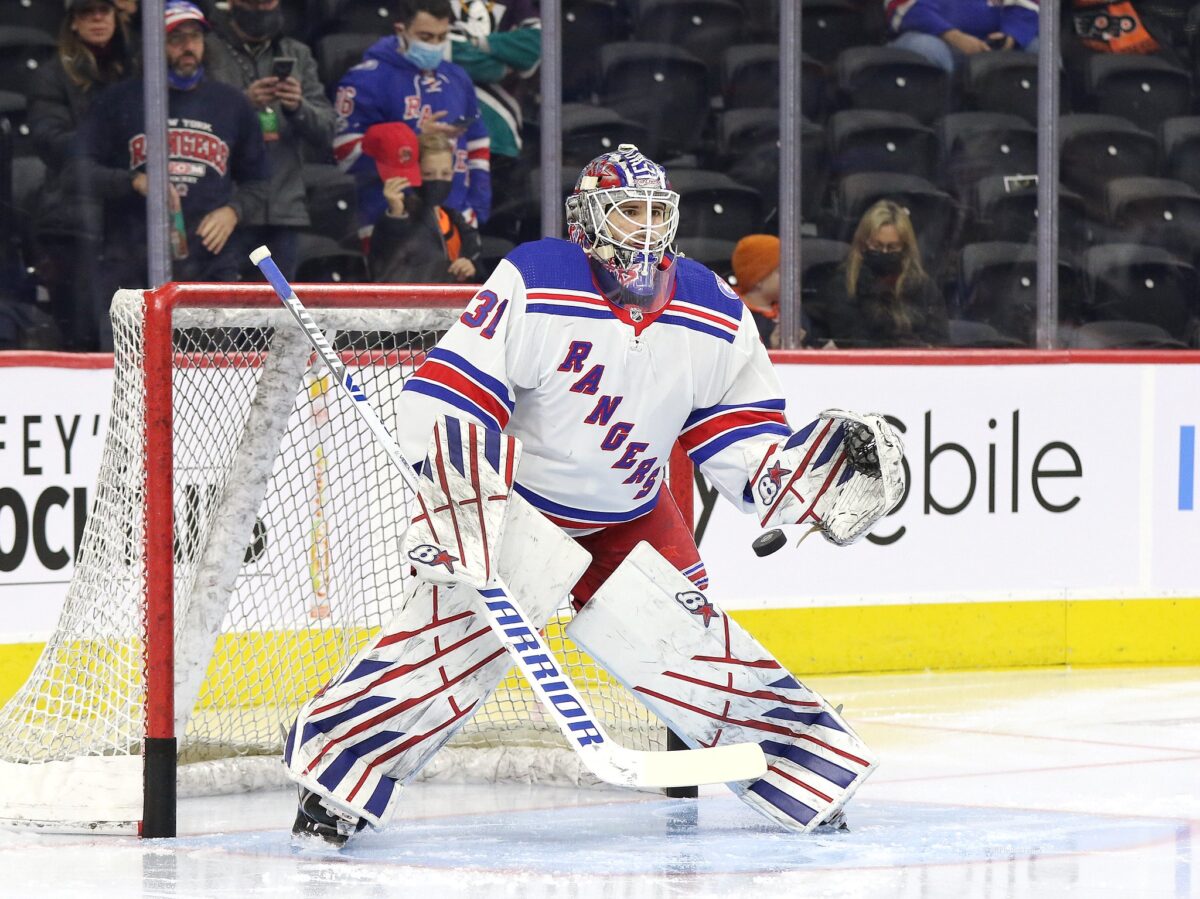At 32-13-5, the New York Rangers’ 69 points are good for third place in the Metropolitan Division. Only five teams in the NHL have more points and have a better point percentage than the Rangers. For a group that still has one of the youngest rosters in the league, the jump between last season and this one has been marvelous.
But glancing past the standings and team points, you see a trend that has puzzled the analytics community all season long. For 50 games now, the Rangers have vastly underperformed at five-on-five but somehow remain among the league’s elite.
The data is supposed to even out over time, but head coach Gerard Gallant’s Rangers keep finding innovative ways to defy the odds. Rarely is a team this much of an analytical outlier while having success. And yes, the first 10 games, which were abysmal for the Rangers, skewed the numbers slightly. But inconsistencies have plagued the Blueshirts all season.
Analytics and the eye test tell us that. There are games they look sluggish, games they don’t shoot the puck, and games in which they look like the team we grew accustomed to last season. So how on Earth are the Rangers this good when the numbers tell us they don’t belong?
Well, let’s find out.
A Dive Into the Rangers’ Analytics
For those who have seen ‘Moneyball,’ Brad Pitt infamously says, “There’s 50 feet of crap. Then there is us.” That quote pretty much sums up the Rangers at five-on-five analytically. By the metrics, the Rangers are not a top-five NHL team.
Per Natural Stat Trick, they rank last in Corsi-for percentage (CF%), 31st in Fenwick-for percentage (FF%), 29th in shots for percentage (SF%), 15th in goals for percentage (GF%), 29th in expected goals for percentage (xGF%), and last in scoring chances For percentage (SCF%). In other words, the Rangers at five-on-five are extraordinarily sub-par, especially when you consider where they are in the standings.
The Rangers have found ways to win as harsh as these numbers are. And recently, the Rangers have started to play at a more even clip when five-on-five, even edging their opponents in three of the last four games. Signs are beginning to point in the right direction for a team with moves at the trade deadline on their horizon.
But the secret to the Rangers’ success isn’t much of a secret anymore. The answer is twofold, starting with goaltender Igor Shesterkin. Shesterkin, contrary to the Rangers at five-on-five, has been an analytical gem.

At all strengths with goaltenders who have played over 300 minutes, Shesterkin leads the league in goals saved above average (GSAA) with 30.67. That mark is almost 10 goals higher than Jacob Markstrom, who is second. Shesterkin’s .879 high danger save percentage (HDSV%) is second to only Ville Husso’s .881, and his high danger goals saved above average (HDGSAA) is first at 17.71. (Data courtesy of Natural Stat Trick)
With a 24-5-3 record, a minuscule 2.01 goals-against average, and a .939 save percentage, the Rangers’ netminder has been other-worldly this season. His play is the main reason why the Rangers are where they are, but not the sole reason. The other is special teams play.
Related: Rangers’ Emphasis on Discipline Is Paying Off
On the power play, the Rangers are fifth in CF%, third in FF%, second in SF%, third in GF%, second in xGF%, and 17th in SCF%. They are utterly dominant when up a man, taking advantage of any chances given to them by the opposition. At 26.6 percent, their power play is third in the NHL, a crucial factor in their offensive game.
Deadline Improvements Will Be Key
As ugly as the five-on-five numbers are, the Rangers are fortunate enough to have the goaltending and special teams units to overpower their flaws. Numbers don’t play the games, people do, and the Rangers have the best goaltender in the league right now.
For me, the concerning part of the analytics is that the Rangers are seemingly following an identical path that caused heartbreak throughout Henrik Lundqvist’s 15-year career. As their younger forwards and defensemen mature, the Rangers will naturally improve. But an impactful and intelligent trade deadline could speed up that improvement.
Adding players who can push the Rangers to the middle of the pack at five-on-five play would make this group extremely tough to beat. The world-class goaltending and special teams are not going anywhere, and any improvements at even strength will boost the Blueshirts playoff odds.
Joe Pavelski, Reilly Smith, and Arturi Lehkonen would positively impact the Rangers’ five-on-five play. Plus, there will be options available for Chris Drury to pounce on, as well as assets and cap-space aplenty. Which assets to move on from and how close the Rangers are will be discussed heavily in the coming weeks.

Can the Blueshirts find that play-driving forward? Will that player slot into the top-six or bottom-six? Do the Rangers look to improve on the blue line, or do they think internal improvements will suffice? The deadline will answer many of these questions, but the on-ice performance of who gets acquired will determine whether the Rangers can improve analytically and statistically.
If you follow me, you know that I think analytics are helpful but not all-powerful. There are ways to defy the analytics, exemplified by this 2021-22 Rangers squad. But they paint a picture that we can all see with our eyes. The Rangers need to improve at five-on-five, but through 50 games, they remain one of the unique analytical anomalies since the introduction of analytics in the late 2000s to early 2010s.